

Josh Nevett
2025 GWM Haval H6 review
1 Month Ago
It's not your average seven-seat SUV, the Peugeot 5008. That's mostly a good thing, provided you can forgive a few traditionally French quirks.
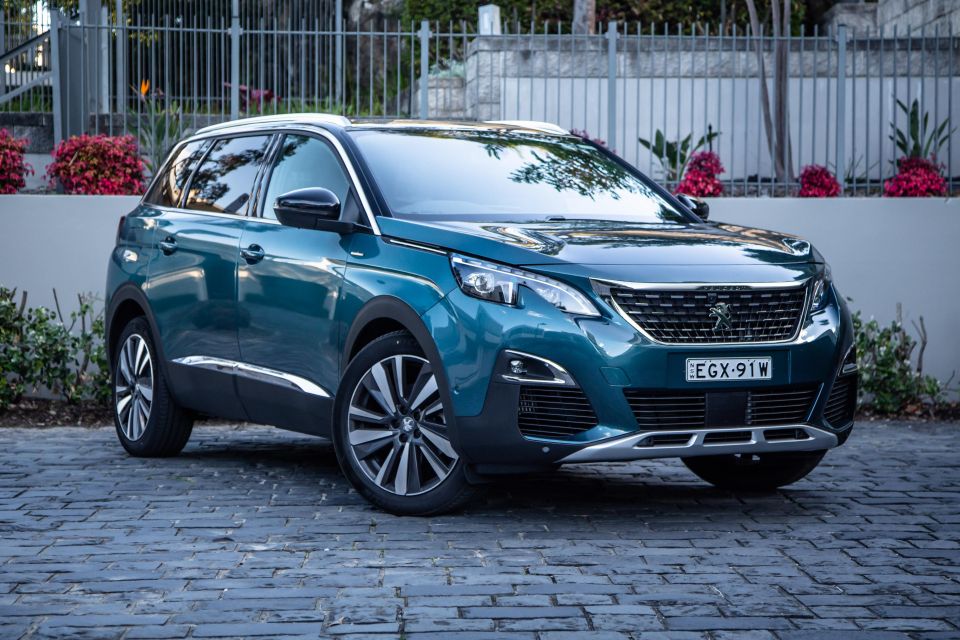
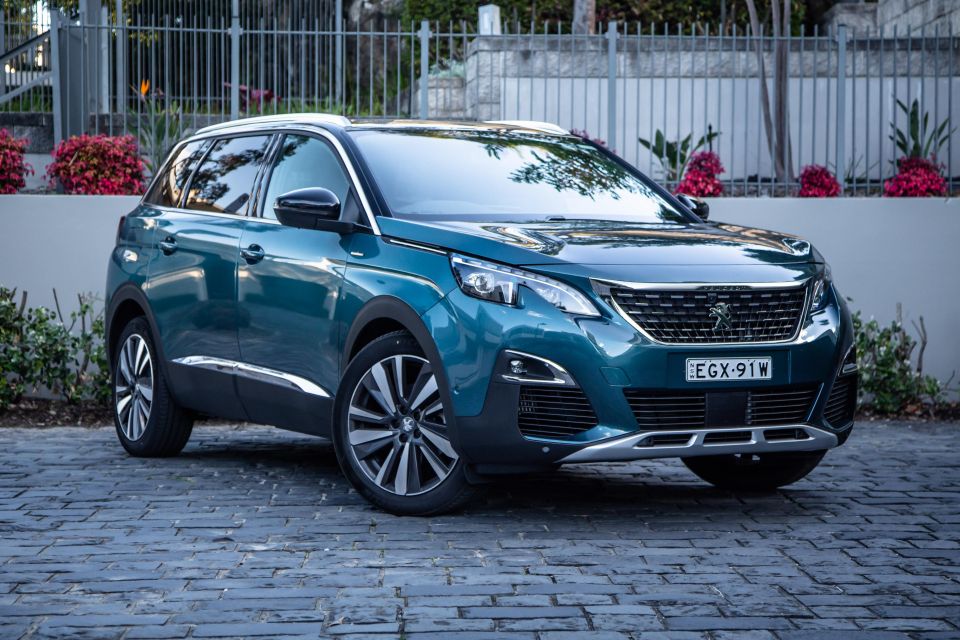

Contributor
New from
$44,490
excl. on-roads

Contributor
New from
$44,490
excl. on-roads


Contributor
New from
$44,490
excl. on-roads

Contributor
New from
$44,490
excl. on-roads
Quickly see how this car stacks up against its competition. Select any benchmark to see more details.
Where expert car reviews meet expert car buying – CarExpert gives you trusted advice, personalised service and real savings on your next new car.
Can you make a family-sized SUV attractive and practical? Peugeot’s new 5008 certainly tries, by focusing on the small things.
With its sophisticated technology and luxurious interior, the 2021 Peugeot 5008 GT-Line has taken the step from MPV to stylish crossover.
With seven seats, it’s a larger take on the 3008. It’s spacious, comfortable, and drives more like a big hatchback than a lumbering family bus.

But there’s more to a family car than looking sharp and feeling special. It needs to fit the whole family and their bags, and do it day-in, day-out without complaining.
Seven-seat SUVs such as the Nissan X-Trail and Skoda Kodiaq are tough competitors, so the 5008 won’t have things its own way. Does it have the practical chops to back up its chic exterior?
Peugeot has an updated 5008 coming in the first quarter of 2021. Get the details here.
Peugeot offers only two 5008 models for 2020, the petrol GT-Line Petrol and diesel GT. Neither is cheap compared to rivals such as the X-Trail, Skoda Kodiaq, and Hyundai Santa Fe.
The 5008 GT-Line starts at $55,990 before on-road costs, and the 5008 GT Diesel starts at $60,990 before on-roads. Gone is the Allure, previously offered as a cut-price entry-level option.
Engine aside, the standard equipment list separates the GT from the GT-Line. You can give the GT-Line a spec boost by opting for a panoramic sunroof ($1500) and Nappa leather seats ($3000).
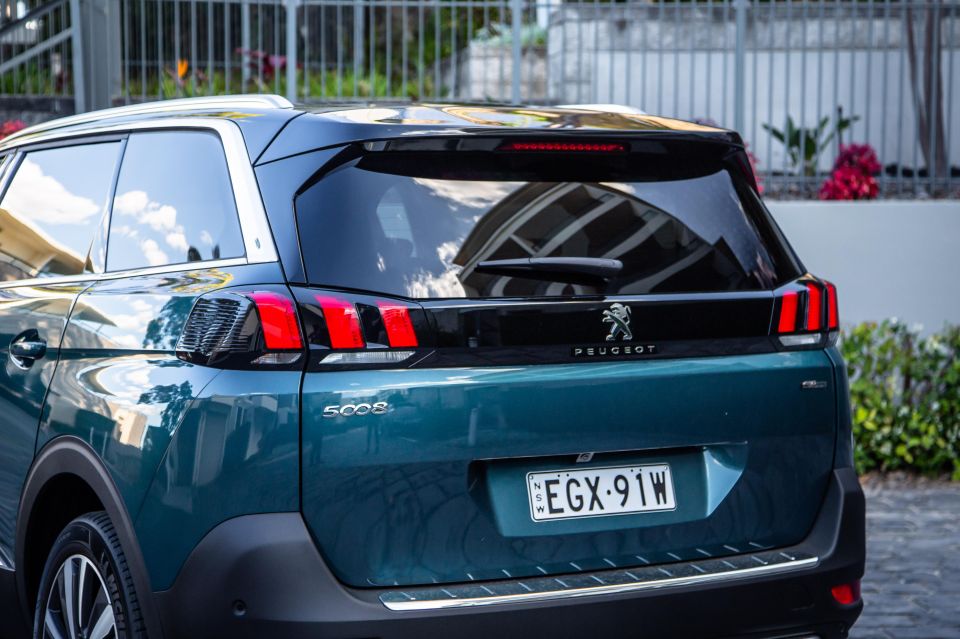
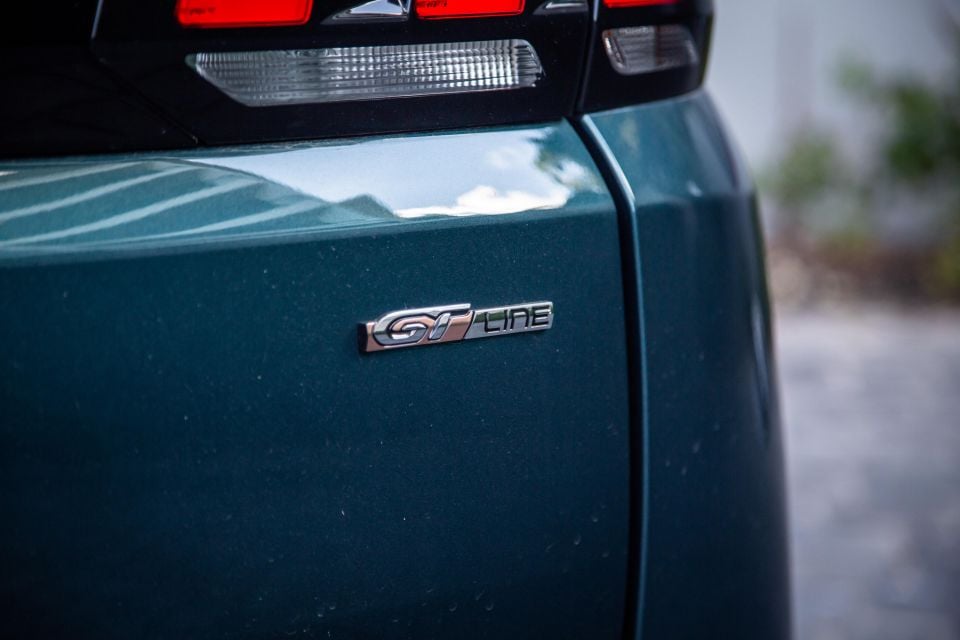
Bianca White is the stock colour, but our Peugeot was dressed in Emerald Green, a colour that grows on you.
Emerald Green, Amazonite Grey, Artense Grey, Nera Black, and Platinum Grey add $690 to the bill, and it’s an extra $1050 for Pearl White or Ultimate Red.
Buy your new car without the stress. It's fast, simple and completely free.

Great service from Travis and team, second time I have used this business would not hesitate to recommend them to anyone
Craig C.
Purchased a Ford Ranger in Sunshine Coast, QLD
CarExpert helped Craig save $7,224 on his Ford Ranger, now let us save you on your next new car.
Get your BEST priceStandard equipment in the GT-Line is more than adequate, and there are enough fancy buttons and settings to keep you entertained for a while.
Regardless of specification, standout features include an 8.0-inch infotainment system with satellite navigation, Apple CarPlay and Android Auto, as well as a 12.3-inch digital instrument cluster, a panoramic sunroof, and a seven-seat interior layout.
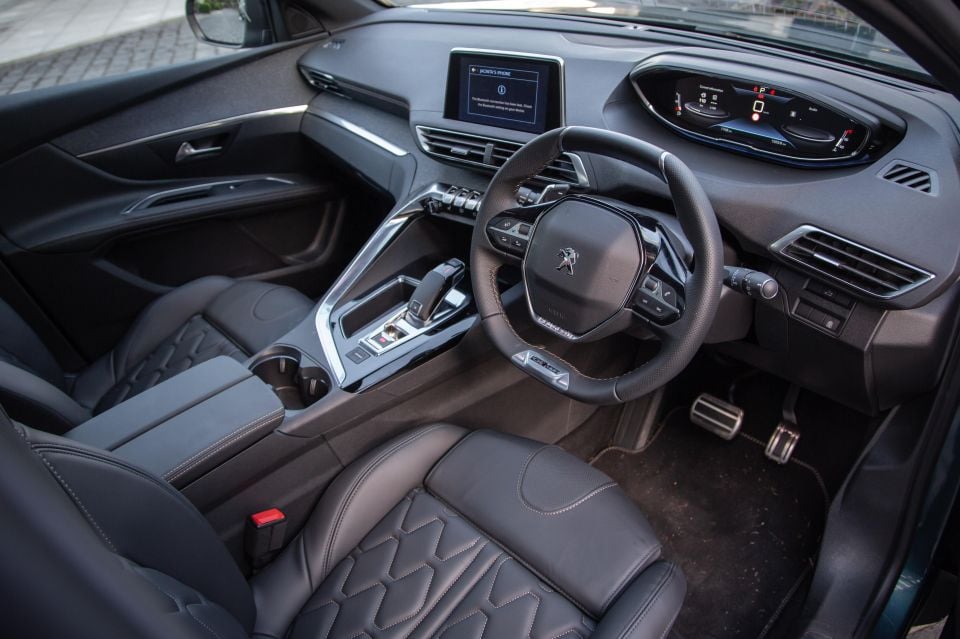
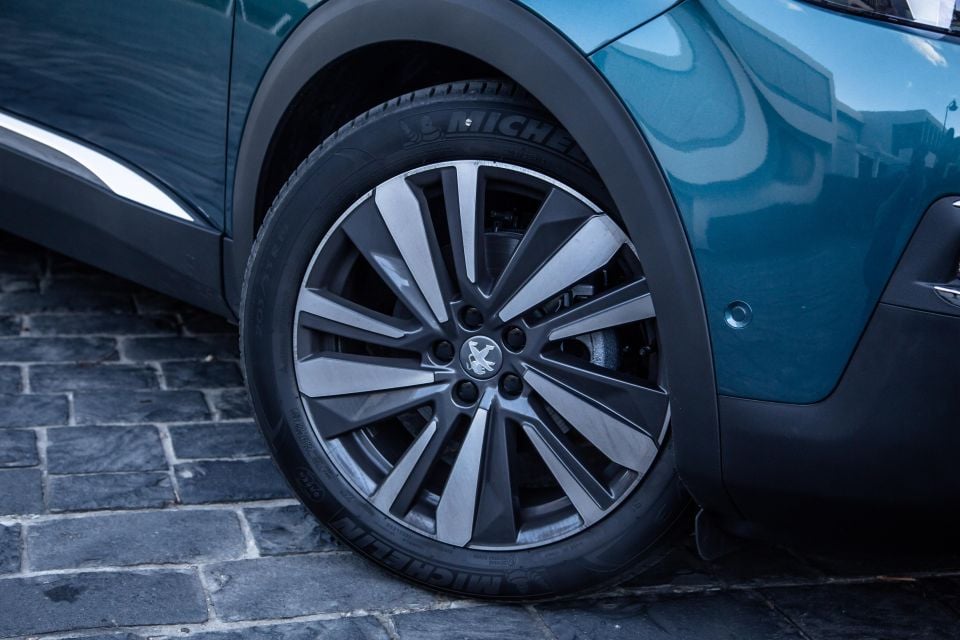
In the front, the driver is treated to a multi-point massage function, and both front seats are heated. In the second row, fold-down picnic tables and window blinds offer family-friendly practicality.
The exterior design of the GT-Line doesn’t break the SUV mould, but it’s stylish and features 19-inch two-tone diamond-cut alloy wheels, fake twin exhausts, stainless steel roof rails, and LED headlights.
For your money, you’ll also get 360-degree camera, along with the requisite reversing and front cameras, automatic dual-zone climate control, and wireless phone charging.
The Peugeot 5008 was tested in 2016 by ANCAP and received a five-star rating, scoring 86 per cent for adult protection, 85 per cent for child protection, 67 per cent for pedestrian protection, and 58 per cent for safety assist.
It has standard dual, frontal, and side airbags, lane departure warning, active lane-keep assistance, and advanced speed assistance.
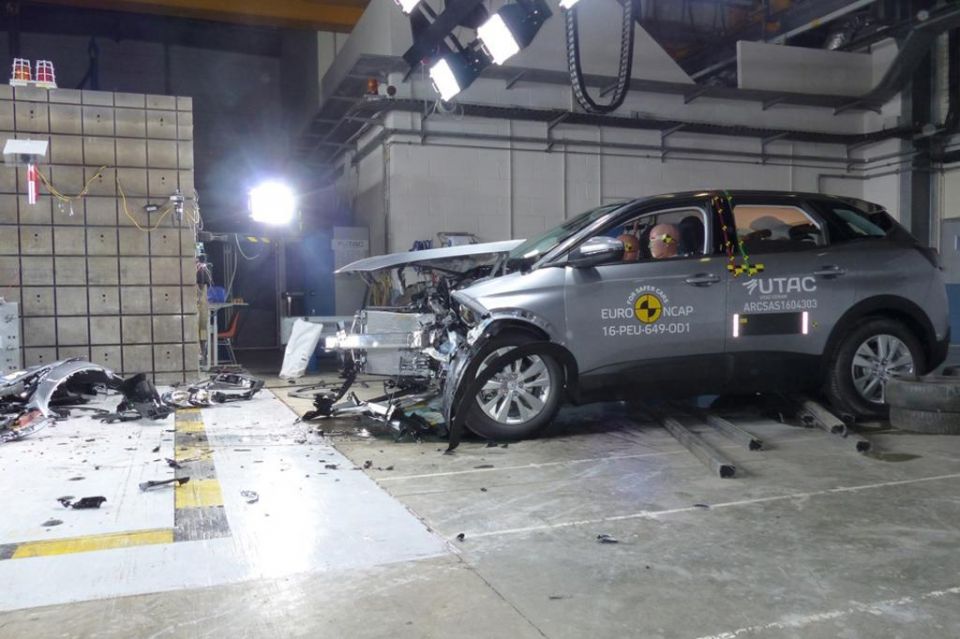
Both models come with adaptive cruise control, autonomous emergency braking with pedestrian detection, advanced driver attention alert, and high-beam assistance.
It’s hard to see the flashing warning light in the side mirror for the blind-spot monitoring system, which makes a head check even more essential than usual – old school, we know.
Where do we start? The style and comfort of the interior are impressive in comparison to its rivals. You get treated to materials typically reserved for sports or luxury cars, not seven-seat family cars.
The way the i-Cockpit almost cocoons the driver makes it quite unique. Everything from the transmission tunnel to the panoramic sunroof combines for a luxurious, well thought out feeling.
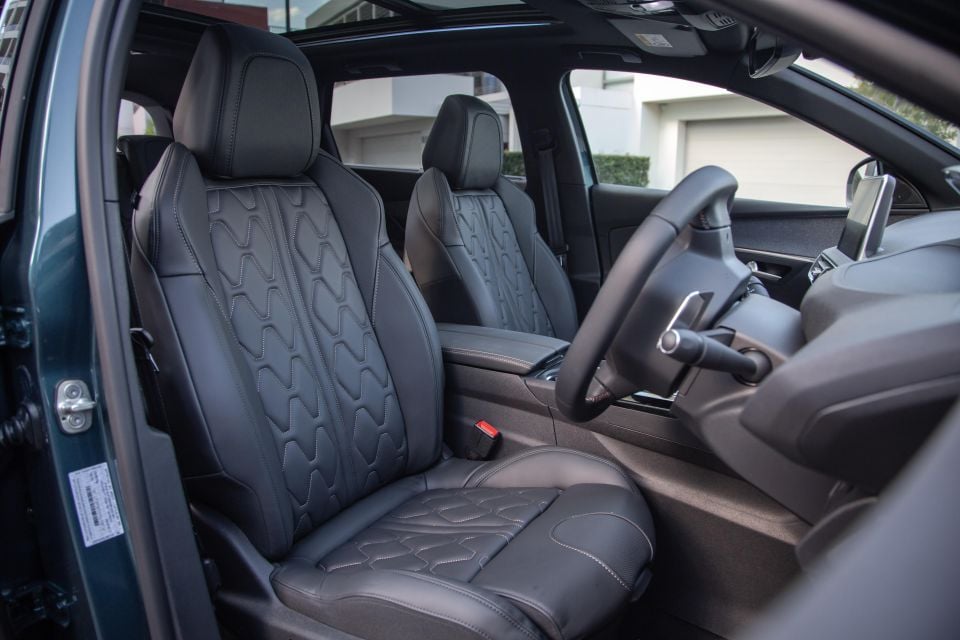
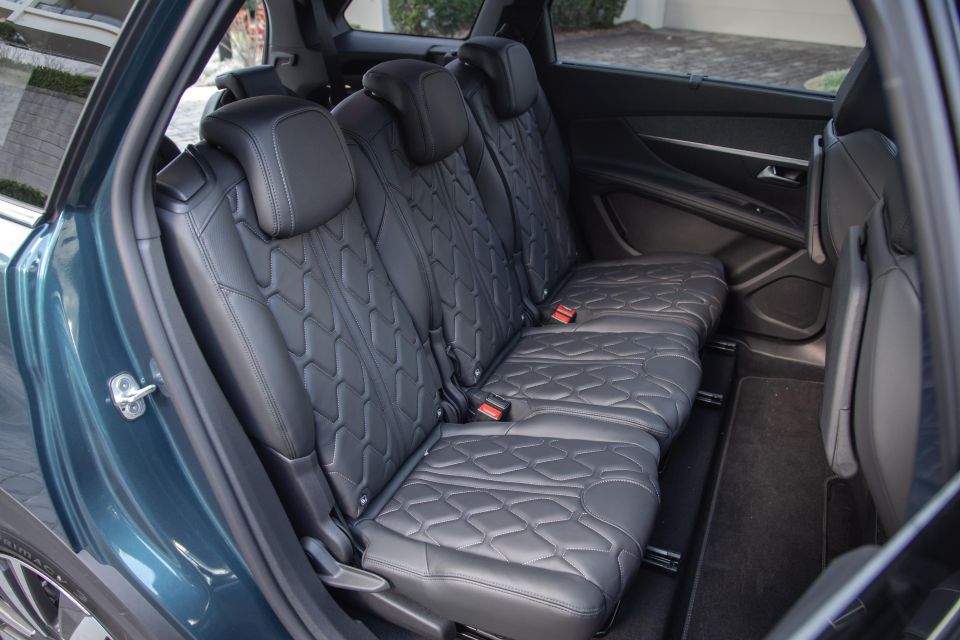
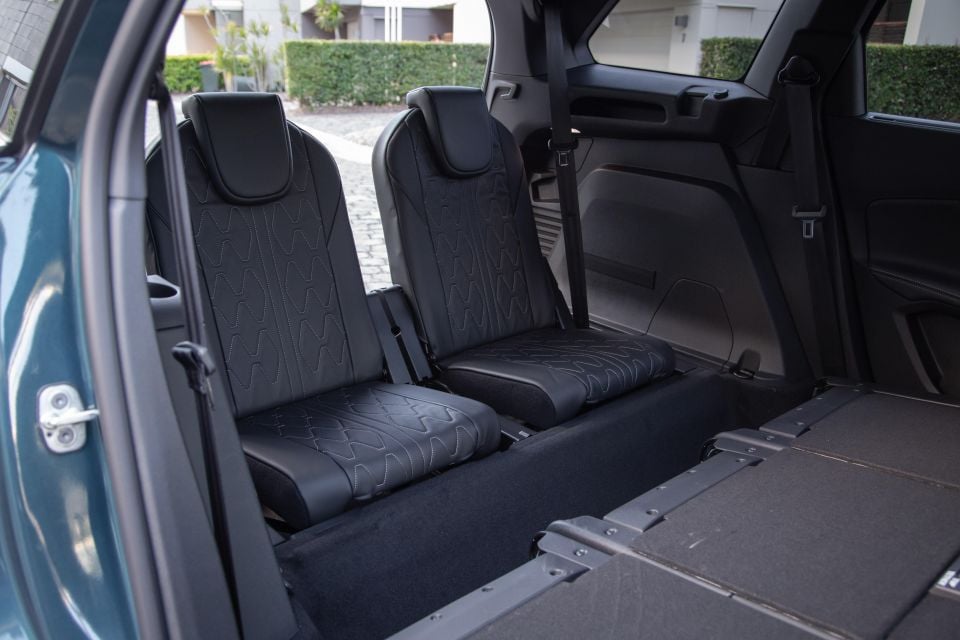
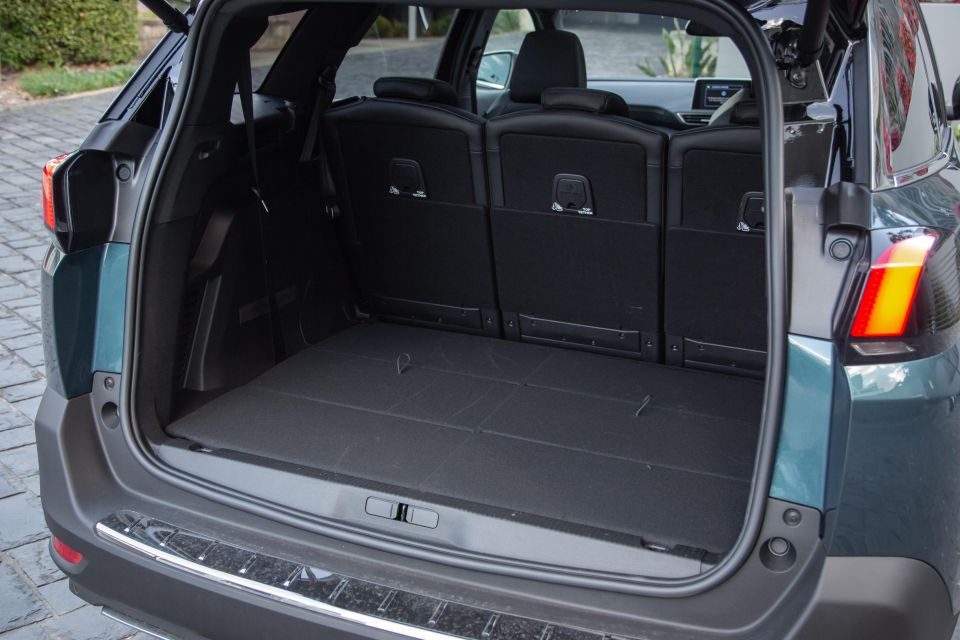

The black leather seats come with what Peugeot calls an ‘Imila’ two-tone TEP/fabric trim, simply meaning it has a cris-cross pattern.
Mood lighting in the door pockets, centre console, and door panels is a nice touch, although if we’re being picky more colour options would be nice.
It’s really hard not to notice how small the steering wheel is. Peugeot says its compact nature is meant to increase agility and make light work of manoeuvres. This is true, but it takes some time to adjust to its miniature feel.
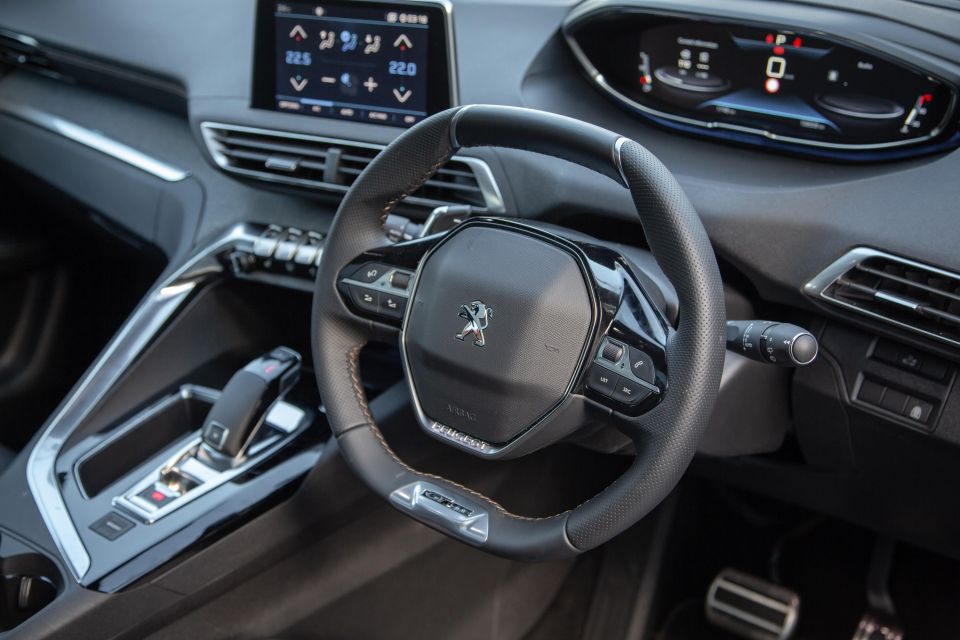
Nonetheless, the wheel is leather-trimmed, and its paddles for manual control are easy to use. We like how Peugeot has flattened its top so you can easily see the 12.3-inch digital instrument cluster boldly placed behind it.
And why not? The graphics on display are very slick, with satellite navigation displaying landmarks such as the Sydney Harbour Bridge in full 3D graphics.
The display gives you a choice of how you want to display information such as navigation, driver and engine stats, cruise control settings, and audio data.
In the centre of the dash lies an 8.0-inch touchscreen with all the usual features: satellite navigation, DAB+ radio, Bluetooth, and Apple CarPlay and Android Audio.
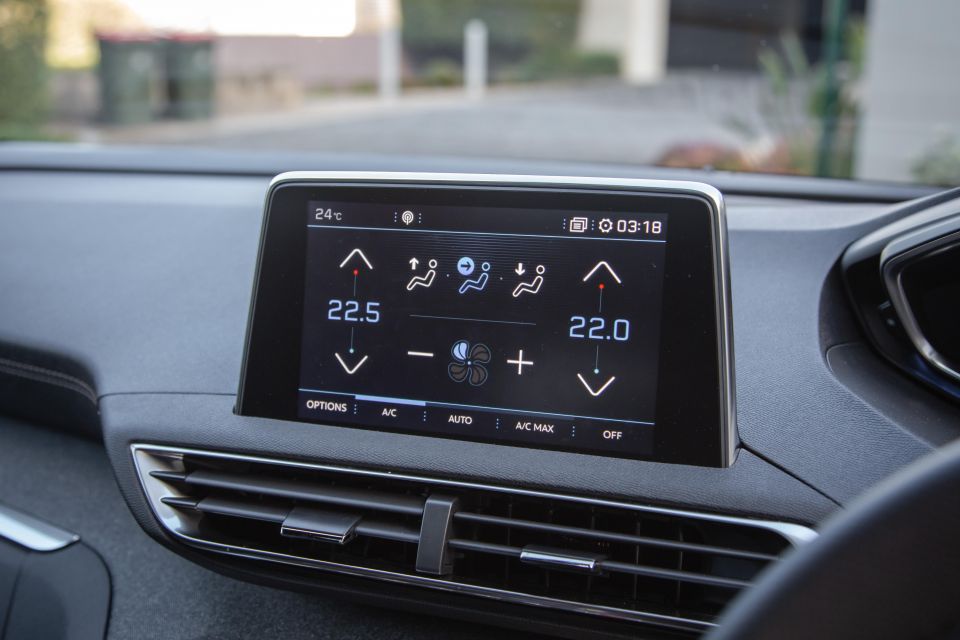
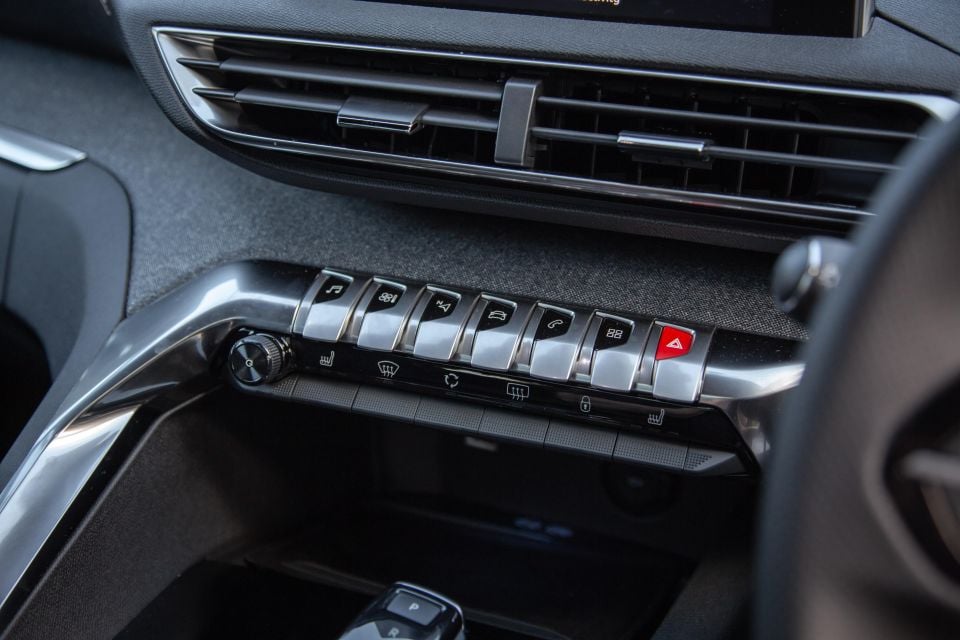
The devil is in the detail for Peugeot, with the soothing sound played every time you press a button on the infotainment screen adding to that comforting feel.
Two lines of buttons are found just below the screen, with one line resembling piano keys. They closely mirror the settings described above, with the addition of phone options, further air conditioning controls, and the heated seat switch.
The simple layout initially appears quite foolproof, but finding your way around the infotainment system can be a little confusing because of the absence of a ‘home button’.
On the transmission tunnel you’ll find the gear shifter, a wireless phone charger, a 12V socket and USB port, space for a set of keys, and two cup holders. You’ll also find the electronic handbrake, and the button to activate sport mode.
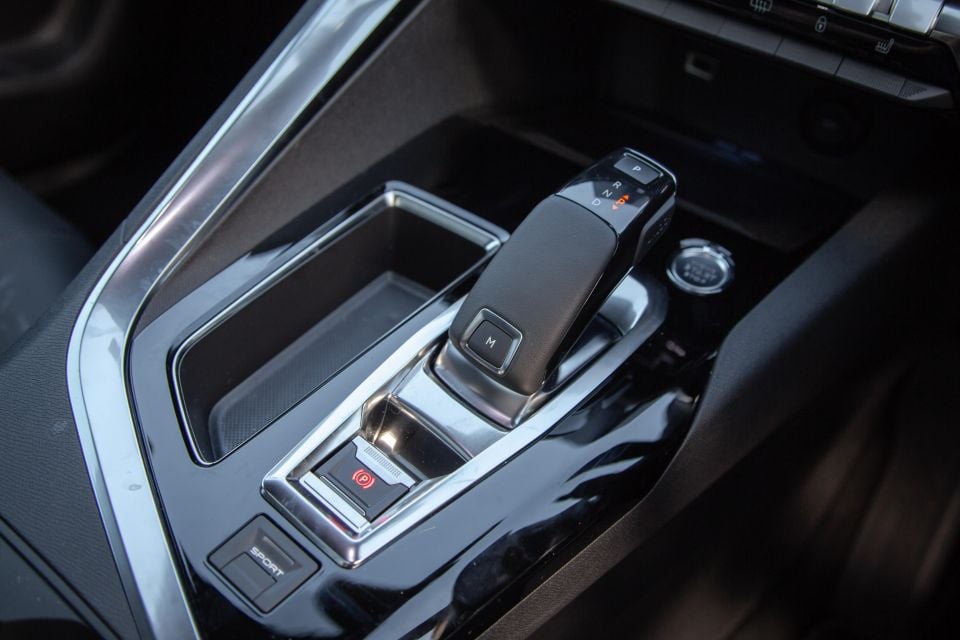
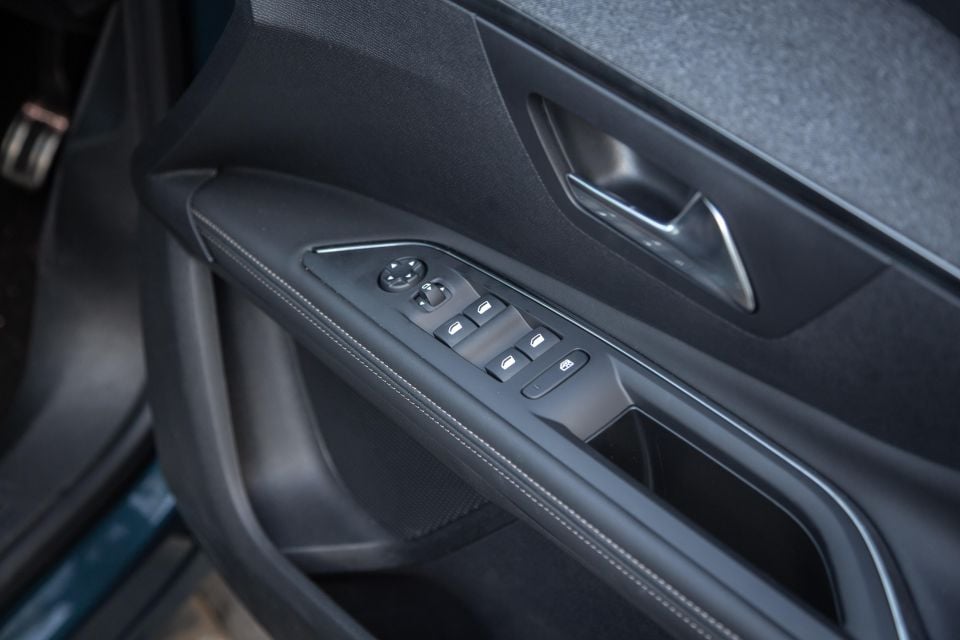
The second row of seats are a little stiff, but thankfully they can be reclined. There are air vents back there, and enough space for adults to sit behind adults.
The fold-down picnic tables are great for kids, but don’t expect to be able to use them if you are taller than five foot.
The two seats in the third row are easy to fold out of the floor, and just as easy to put back. They also can be removed to create more boot space. Getting into the back row isn’t too difficult given the second row folds forward, but once you’re in the third row it’s a child-only zone.
Two adults fit, but it wouldn’t be long before they’d become unhappy. These are part-time seats, so parents lugging around tall teens or making more frequent use of the third row might want to look at a Toyota Kluger, Nissan Pathfinder, or even a proper people mover.
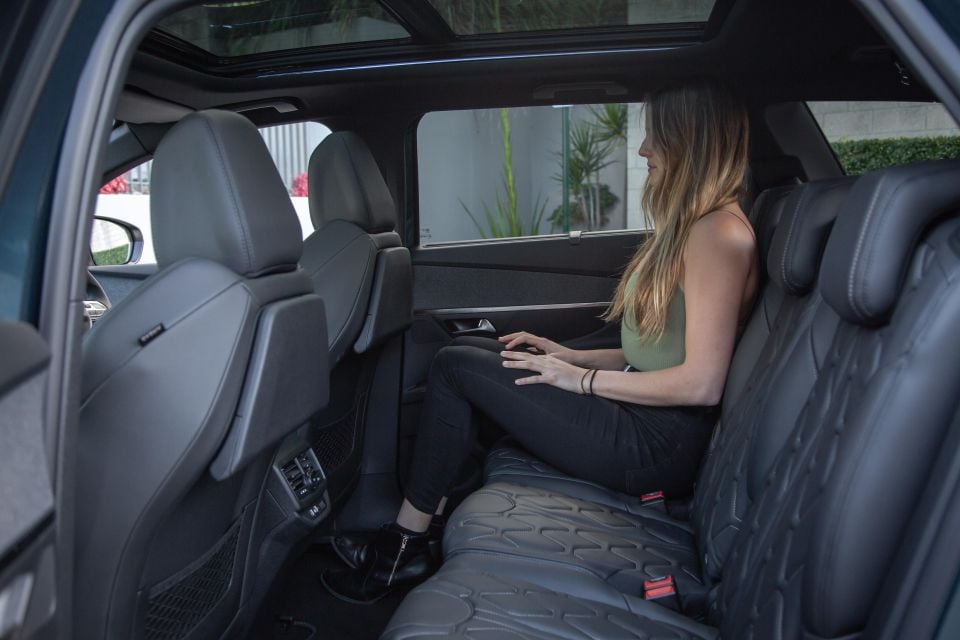
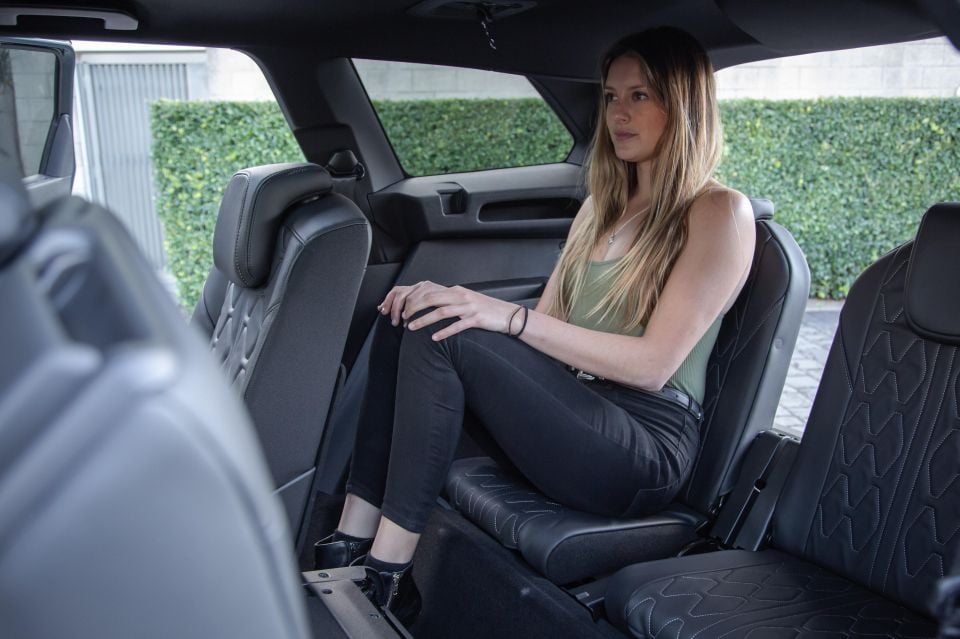
The GT-Line’s capacity is vast, with the ability of all seats but the driver’s to fold providing 2150L of boot space and a load length of 3.2 metres.
When all seats are in place you can get 166L of boot space (measured to the roof) and with the third row folded this increases to 591L.
The turbocharged 1.6-litre four-cylinder petrol engine does its job, but it’s also nothing to rave about. The 121kW offered at 6000rpm doesn’t make the 5008 feel overly athletic, taking 10.5 secs to get from 0-100km/h, but the 240Nm on offer from 1400rpm means there’s enough torque at the low end of the rev band.
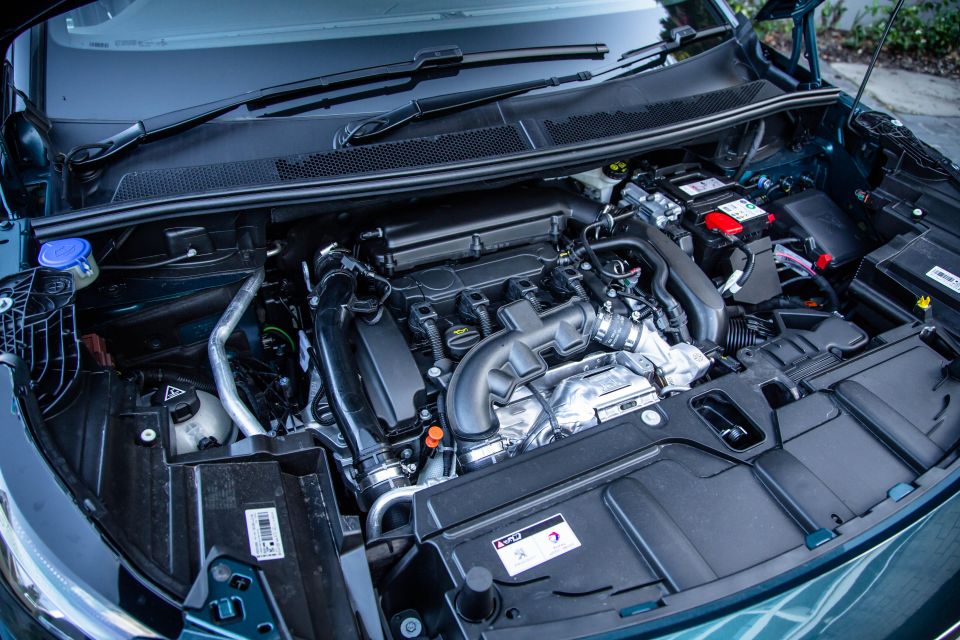
A 2.0-litre turbo-diesel engine powers the 5008 GT, pumping out 400Nm at 2000rpm. With a braked towing capacity of 1800kg compared to the 1350kg on offer in the petrol, it’s a better choice if you need to haul a trailer.
The GT-Line has a six-speed automatic gearbox, compared to the eight-speed unit in the diesel. Peugeot’s compact petrol engine performs well in official fuel consumption testing, with a claimed combined cycle result of 7.0L/100km.
After a week of driving, which included a few one-hour freeway trips, our GT-Line’s average consumption finished at 8.3L/100km.
Okay, outright performance wasn’t a consideration for the Peugeot team developing the 5008.
The engine can get the car up and running with seven passengers on board, though, and proved efficient during our time behind the wheel, which is undoubtedly more important than eye-popping performance.
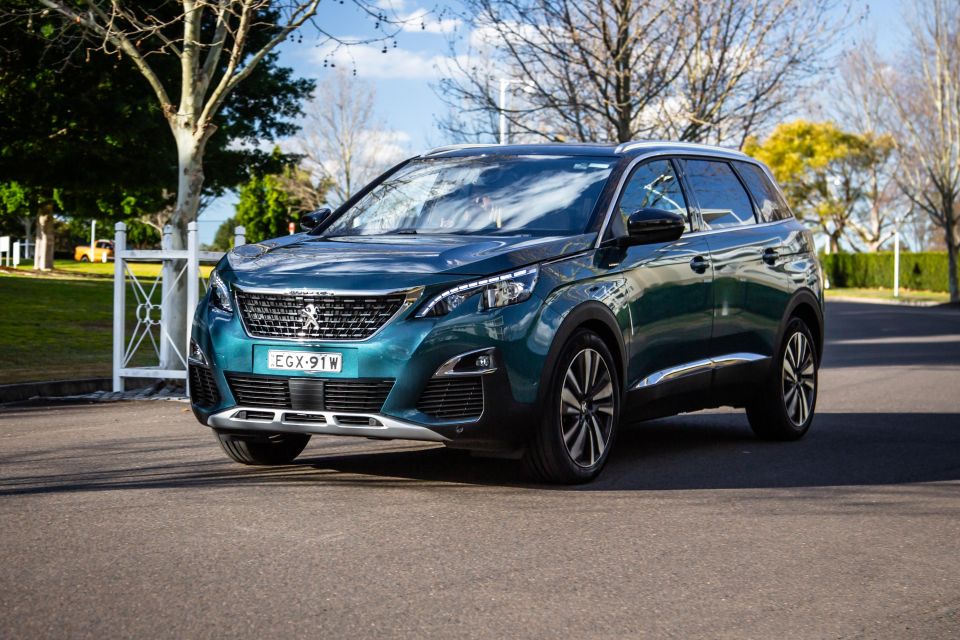
Given its main job is carting people around (and looking pretty in the process), Peugeot has nailed the brief.
When putting your foot down, acceleration has a slight delay as the transmission and engine work out what’s required.
It can be improved somewhat by switching into sport mode, but don’t be disillusioned. It doesn’t transform the 5008 outright, it instead adds a synthesised engine note and sharpens the throttle response.
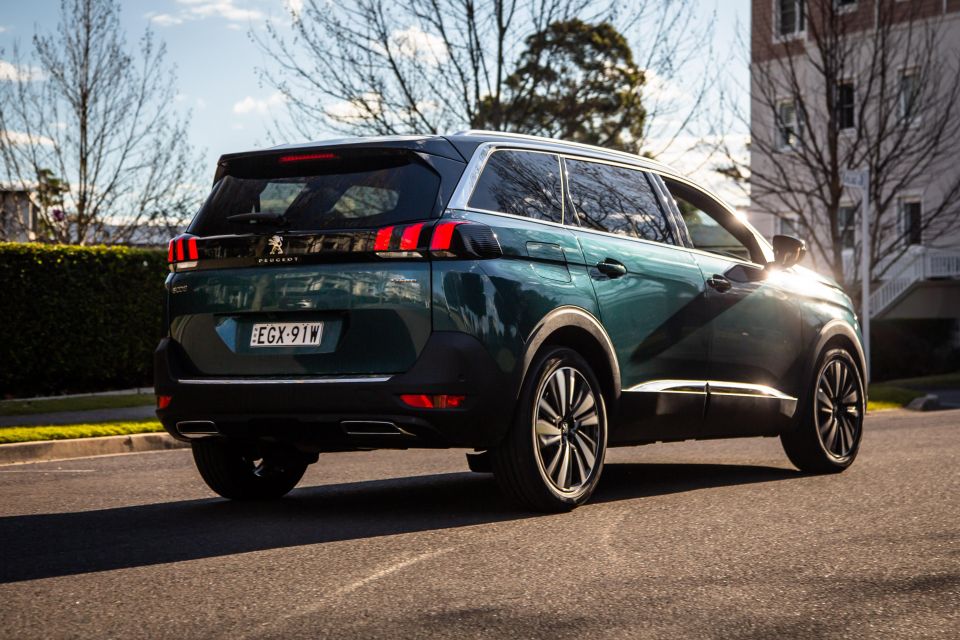
The ride is impressive over bumpy roads and speed bumps, soaking them up without too much drama from behind the wheel. It maintains its composure at both low and high speeds, and with just the driver or a full load of passengers on board.
The trade-off is a fair helping of body roll when the 5008 is slung into a corner. Then again, how many 5008 drivers are going to be slinging, throwing, or chucking their cars into anything other than the last carpark at Woolworths?
The 5008 GT-Line is covered by five-year, unlimited-kilometre warranty with five-year roadside assist.
Services are required every 12 months or every 20,000km, with the first five service intervals quoted at $474, $789, $474, $802, and $487 – totalling $3026 for the first 60 months/100,000km.
Buy your new car without the stress. It's fast, simple and completely free.

Great service from Travis and team, second time I have used this business would not hesitate to recommend them to anyone
Craig C.
Purchased a Ford Ranger in Sunshine Coast, QLD
CarExpert helped Craig save $7,224 on his Ford Ranger, now let us save you on your next new car.
Get your BEST priceIn our hands, the Peugeot 5008 GT-Line proved stable and comfortable.
We like its fuel efficiency, comfortable driver’s cockpit, and spacious cabin – and its exterior is appealing enough in a segment more focused on outright practicality.
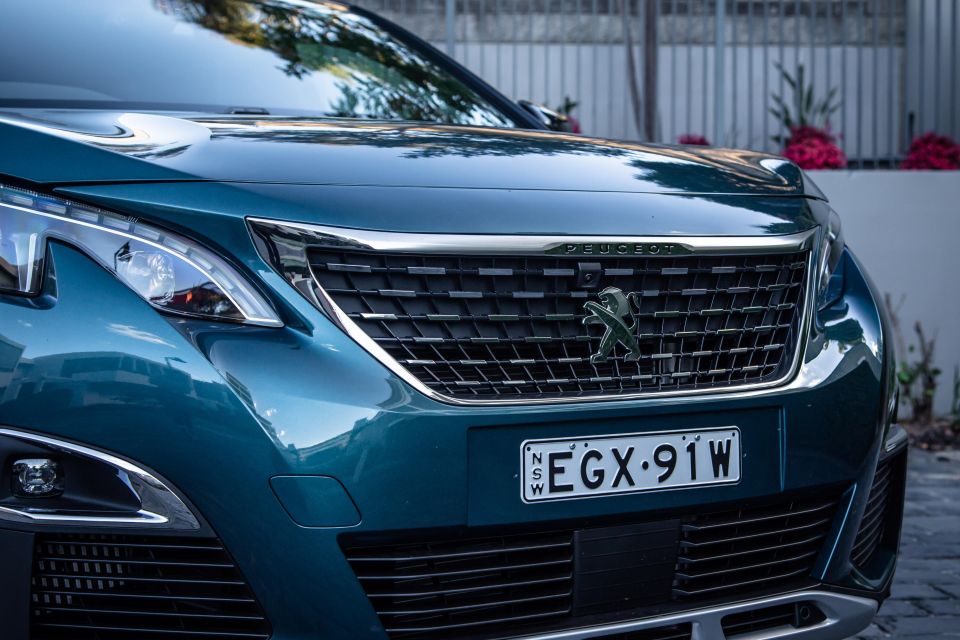
Where expert car reviews meet expert car buying – CarExpert gives you trusted advice, personalised service and real savings on your next new car.
It loses points for both its absence of all-wheel drive and the small, slightly underdone engine. It also sits near the top end of the price range, coming in approximately $10,000 more expensive than the entry-level Skoda Kodiaq.
Overall, the Peugeot 5008 GT-Line earns its spot among the top family SUVs, offering its own spin on what it means to ride in style.
Where expert car reviews meet expert car buying – CarExpert gives you trusted advice, personalised service and real savings on your next new car.


Josh Nevett
1 Month Ago
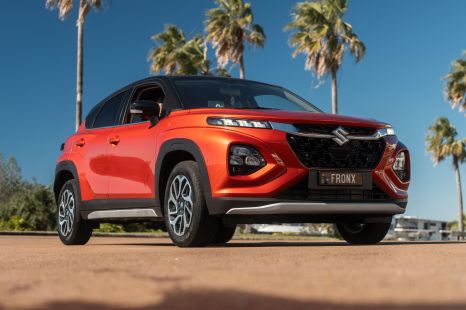

William Stopford
1 Month Ago


Matt Campbell
1 Month Ago


James Wong
28 Days Ago


CarExpert.com.au
22 Days Ago


William Stopford
13 Days Ago